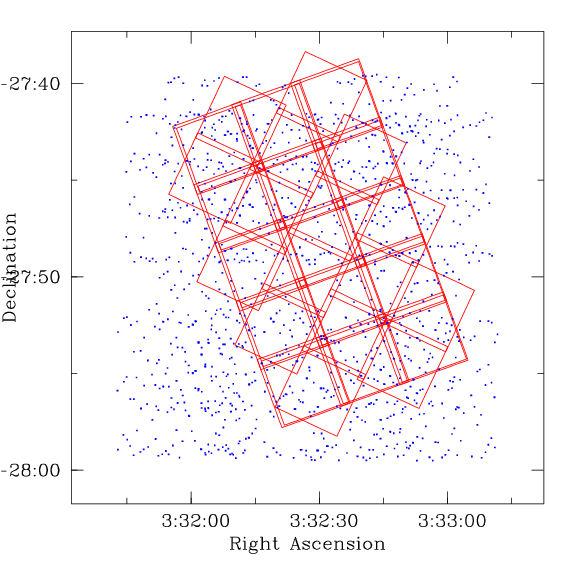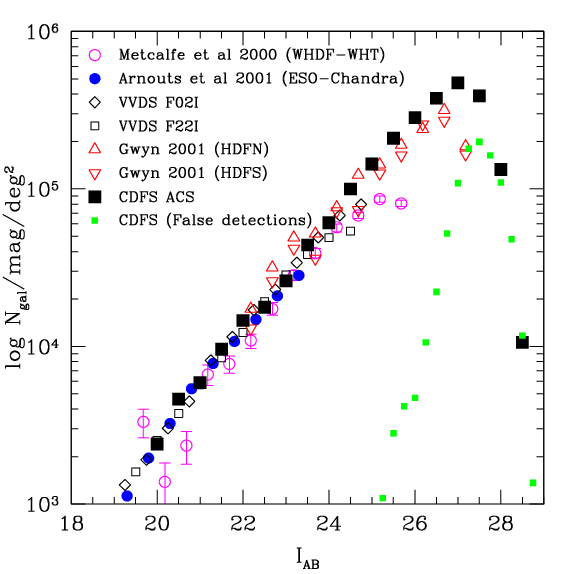|
The figure at right shows the I-band CDFS number
counts for both epochs. The single epoch number counts are shown
in black while the counts for the combined epochs are shown in
red.
The counts are normalized to slightly different areas; the area
covered by the combined epochs is slightly larger than that
of the single epoch.
The CDFS counts have
been have corrected for the cosmic rays in the image by throwing out all
objects whose half-light radius is less than 1.35 pixels.
The false detection rate was calculated by taking the original image,
mutliplying by -1 and run SExtractor on this negative image with the original
parameters. Since the image is negative, all detections are perforce false.
The resulting number counts divided by the true number counts measured
from the positive image give the false detection rate.
The false detection rates for the two epochs are shown as solid
lines on the graph.
The limiting magnitude would appear to be about IAB=26.5,
as this is where the counts start to turn over and where
the false detection rate is 10%.
|


